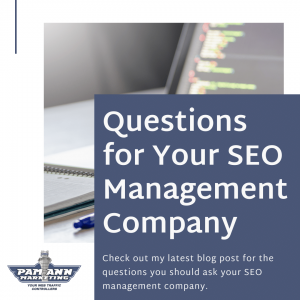
Do you know what a meta description is? It may sound like an overly technical term, but really it’s not. Here’s how SEO Moz describes it: “Meta descriptions are HTML attributes that provide concise summaries of webpages. They commonly appear underneath the blue clickable links in a search engine results page (SERP).”
HubSpot, meanwhile, goes into a little more detail: “Meta-descriptions play a big role in search results. In case you’re unfamiliar with the term, a meta description is the snippet of information below the link of a search result. Its purpose is to describe the contents of the page to the searcher. The end goal is to convince and persuade the searcher to click through to your website. Any words that match the search term are bolded in the description.”
Why Meta Descriptions Matter
In a nutshell: When you conduct a Google search, you’re given a list of links that match your search criteria, and under each link is a quick summary of what the page contains. That summary is the meta description. And it’s important that your own Web pages and blog posts have their own meta descriptions so as to take full advantage of this precious online real estate.
The meta description is an invaluable opportunity to capture some keywords and to make a strong first impression on search engine users—persuading them to actually click the link and visit your website. But in order for this to happen, you have to write a good, persuasive piece of copy—all while keeping it to 160 characters or less. (If it is more, Google will likely cut it off mid-sentence.)
4 Elements of a Strong Meta Description
There are four key elements that make any meta description effective:
- Your branded keywords. What we mean by this, generally speaking, is your company name. Grammar Chic blog posts always have our company name in the meta description, to start building some Google collateral and to make sure our content is clearly marked as our own.
- Additional keywords. One or two focus keywords, designed to attract search engine users, should also be worked into the meta description. For example, in a post that offers content marketing tips, we might include content marketing or content marketing solutions as our focus keywords.
- A statement of value. Why should search engine users click through to your content? Your meta description should summarize not only what the content is about, but how someone will benefit from reading it.
- A call to action. We’d also recommend a call to action—an insistence that your search engine user click through to read your content.
That may sound like an awful lot to encompass in 160 characters, but it’s more than possible. We’ll show you. Here’s the meta description used for this very blog post:
Writing meta descriptions is key to owning the Google SERP—but how is it done? Get meta description tips from the team at Grammar Chic, Inc.
You’ll see there our company name, a focus keyword (meta description tips), value (learning tips to own your Google SERP), and a call to action (Get…).
Digital & Social Articles on Business 2 Community(103)
Report Post








